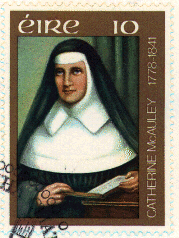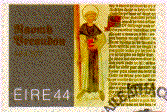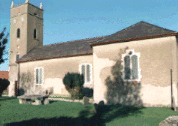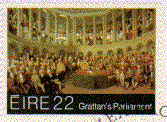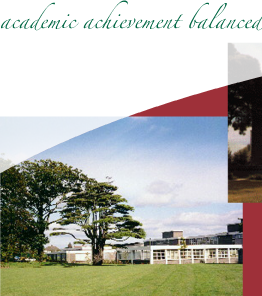 |
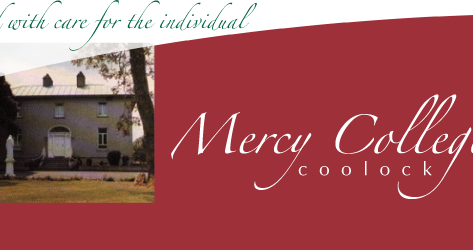 |
 |
| St. Brendan's Drive, Malahide Rd., Dublin 5 | Tel: +353 (0)1 848 0888 / 848 0290 Fax: +353 (0)1 848 0163 | email: info@mercycoolock.ie / web@mercycoolock.ie |
|
An Post
Catherine McAuleyIn 1978 An Post issued a new 10p stamp to commemorate Catherine, her life and work. Catherine was the fourth person associated with the Coolock area to have a commemorative stamp issued by An Post. The other three stamps were commemorating St. Brendan, Henry Grattan and Arthur Guinness the founder of the Dublin Brewery.
St. Brendan
Coolock's first church is said to have been founded by St.Brendan, or more probably, his followers. There is no primary documentary evidence of this foundation but because it is traditionally dedicated to St.Brendan, it is fairly safe to assume that there was an early Celtic church on the site. St.Brendan was born about the year 484.He was a native of Kerry. He entered the monastic life. Much discussion has occured about his narrative of his voyage to America, and all the wonderful events which took place on this journey. A man named Tim Severin crossed the Atlantic in a curragh similar to Brendan's, to prove that the journey was possible.Yet nobody has come up with a definite answer as to whether St. Brendan reached America. St. Brendan founded the famous monastery at Clonfert, which at one time had 1000 people attached to it. At quite an old age, he visited St.Columcille at Iona. He returned to Ireland and died in 577 aged 93. He died at a sister monastery in Annadown but was buried at his own monastery of Clonfert. His festival is celebrated on May 16 each year. In all the details of the life of this great saint, there is no reference to his having ever visited Coolock.St. Brendan's Well
Across the road from Coolock Church a lone tree marks the site of St.Brendans Well. A small trickle of water coming out of the hole in the cement wall of the stream is all that is left to remind us of this well.
"A small well, about four feet in diameter, covered in a small clump of whitethorn, with a large poplar tree. No evidence of devotion. The water is piped away for domestic use ", a description of St. Brendans Well by Kevin Danaher.There was an outbreak of fever in the area around the year 1914. It was thought that the well was not helping matters, so it was duly filled in. But water came up in the kitchen of a nearby house. The well was opened again and its water was piped to the house, which gave the house a constant supply of water. In 1934, the well had a low stone arch to protect it. The wells name "Brendan Parkees" and the original dedication of the Church are the only known links St.Brendan has with Coolock.Henry Grattan
Henry Grattan, a descendant of English Settlers was born in Dublin in 1746. He was educated at Trinity College admitted to the Bar and in 1772 became a member of the Irish Parliament.He was a brilliant speaker and a great champion of the Irish cause. His demand for free trade, for Ireland was granted by the British in 1779 and his campaign to abolish the authority of the British Parliament to legislate for Ireland achieved success in 1782.In spite of these improvements and concessions the majority of Irish people could not vote because they were Roman Catholics and important appointments were made by British and not the Irish Parliament.Although a Protestant himself, Grattan campaigned tirelessly for the political rights of the Roman Catholics. But, unfortunately, at about 1790 the British attitude to Ireland hardened and Grattan could get no further concessions. He retired from public life in 1797. Grattan was not a member of Parliament during the 1798 rebellion and took no part in the rising. In 1800 he returned to Parliament to fight against the Act of Union. He failed in his efforts and sadly the independent existence of the Irish Parliament ended.After the Act of Union, when the Irish Parliament was abolished Grattan became a member of the British House of Commons. Until the end of his days he was a friend of Ireland and continued his activities on behalf of Roman Catholic emancipation.Arthur Guinness
The history of The Guinness Family is one of the biggest success stories in Irish Industry. From a small obscure brewery on 4 acres of land it grew into a multimillion joint-stock company and a world wide dynasty.Arthur Guinness was born in Celbridge in 1725. His father Richard was agent and receiver for the Church of Ireland Archbishop of Cashel, Dr.Price. Dr.Price bequeathed £100 each to Arthur and his father Richard.In 1756, at the age of 31 years, Arthur leased his first brewery in Leixlip. Three years later in 1759 he leased the St. James' Gate brewery.
|
| website design by |
